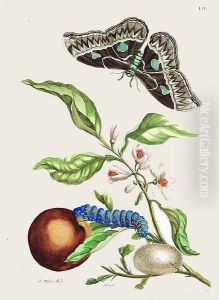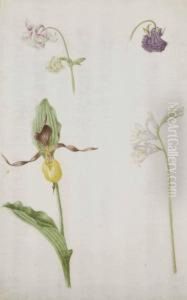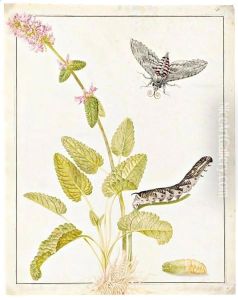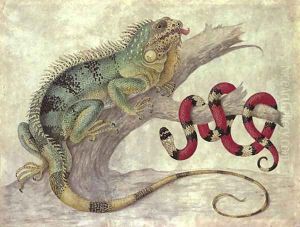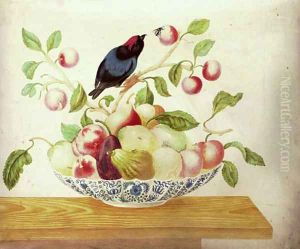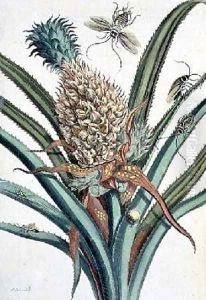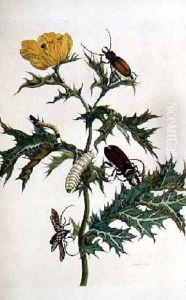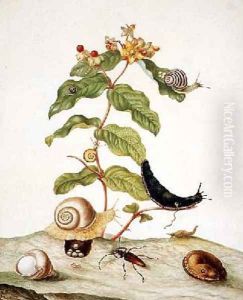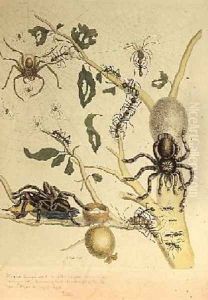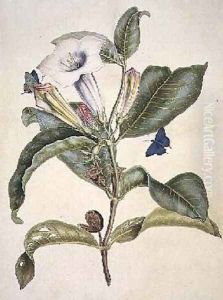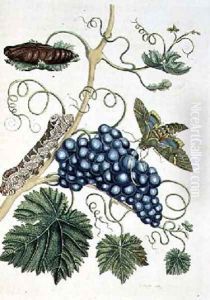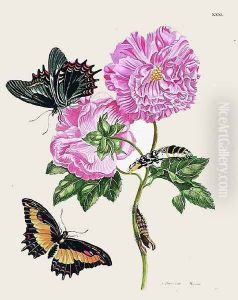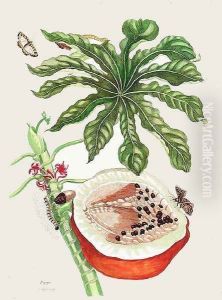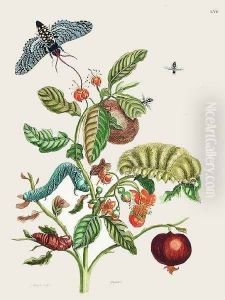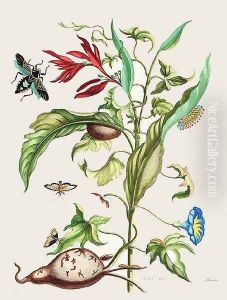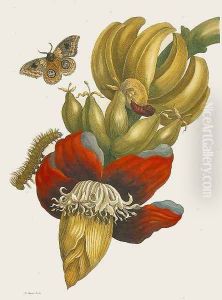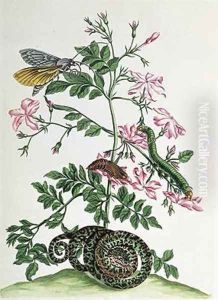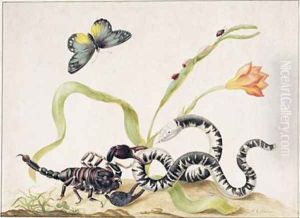Maria Sibylla Merian Paintings
Maria Sibylla Merian was a pioneering German naturalist and scientific illustrator born on April 2, 1647, in Frankfurt am Main, Holy Roman Empire. She is best known for her detailed observations and documentation of the metamorphosis of butterflies and moths, which she depicted in her exquisite illustrations. Merian was one of the first to observe insects directly and to depict their life cycles, contributing to the field of entomology.
She was born into a Swiss family of publishers and artists, and her artistic talent was evident from an early age. Her stepfather, Jacob Marrel, a still-life painter, taught her to paint. By the age of 13, she had started her own study of insects and plants, which would become the lifelong passion that drove her work.
In 1665, she married Johann Andreas Graff, and they had two daughters together. After her marriage, she continued her work, and in 1679, she published her first book of natural illustrations, 'Neues Blumenbuch'. This was followed by 'Der Raupen wunderbare Verwandlung', a two-volume study of the life cycles of caterpillars, which was revolutionary in its detail and scientific approach.
Seeking to study and document insect species in the New World, Merian, accompanied by her younger daughter, undertook a risky trip to the Dutch colony of Surinam in South America in 1699. She spent two years there, studying and drawing the indigenous flora and fauna. Her work was published in 1705 as 'Metamorphosis Insectorum Surinamensium', which brought her international acclaim.
Maria Sibylla Merian's approach was both artistic and scientific, which was unusual for a woman of her time. Her contributions helped lay the groundwork for the modern study of insects, particularly in her insistence on observing insects in their natural habitats. She passed away on January 13, 1717, in Amsterdam. Today, she is recognized not only as a significant artist but also as an important early contributor to the fields of entomology and scientific illustration.
